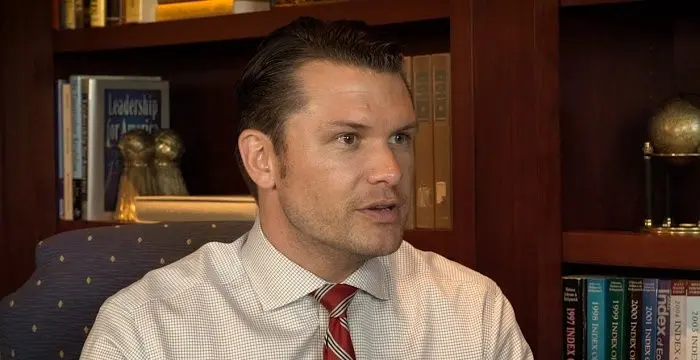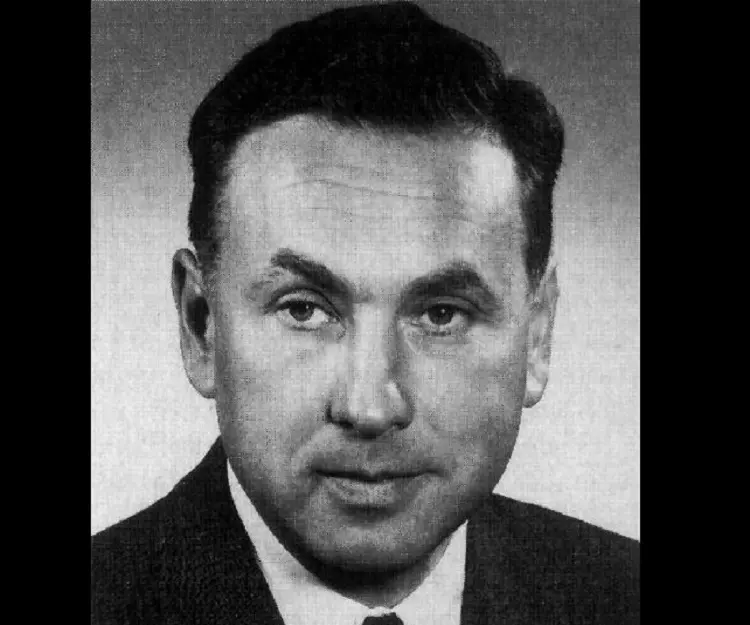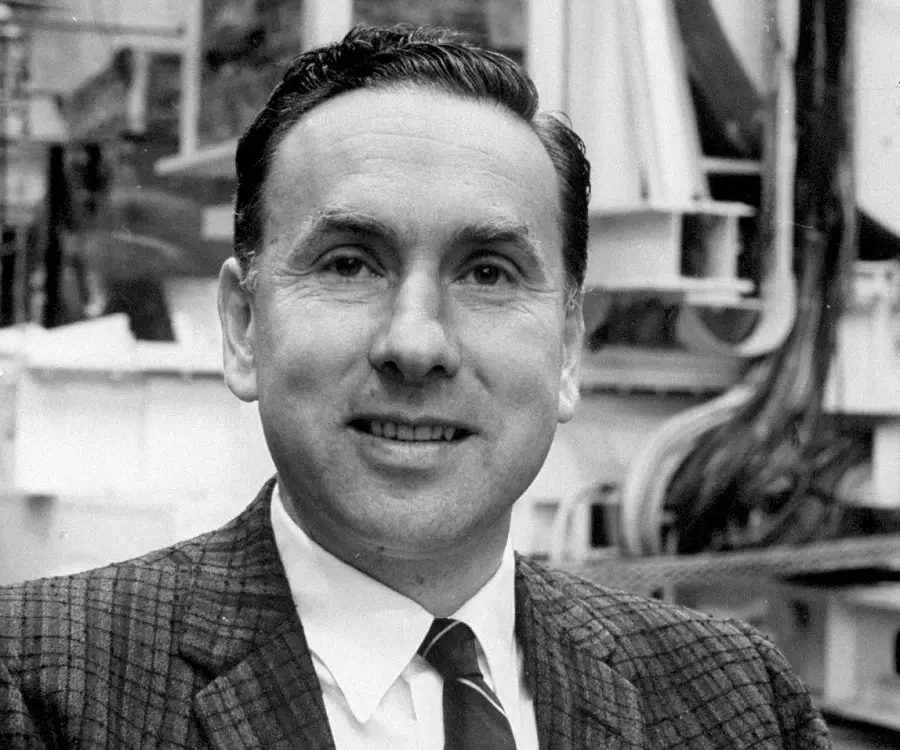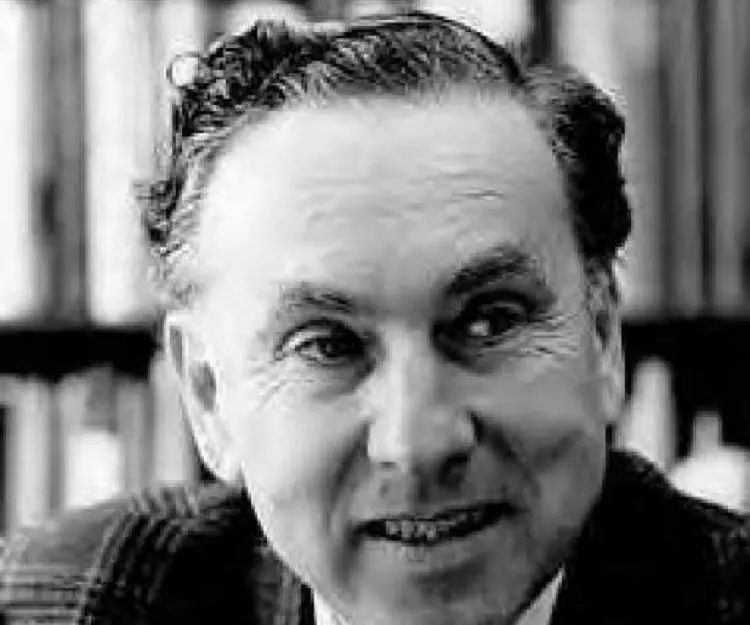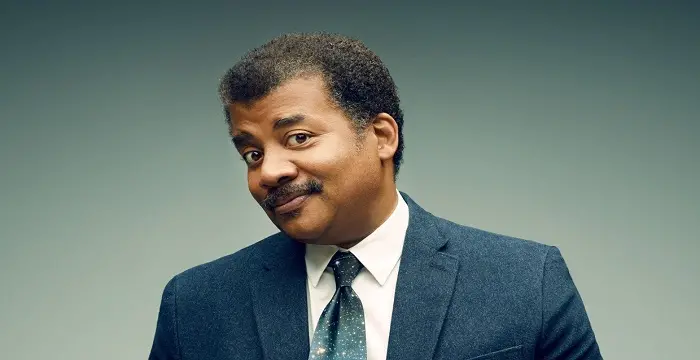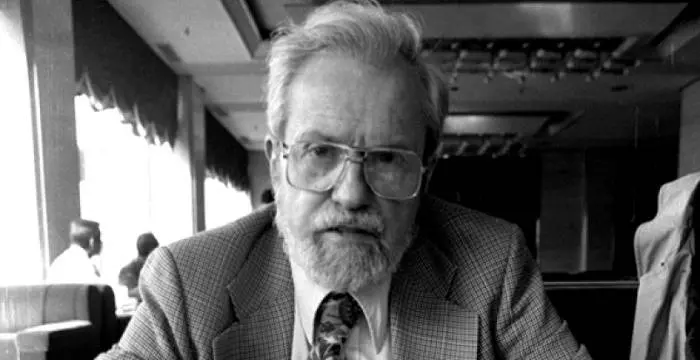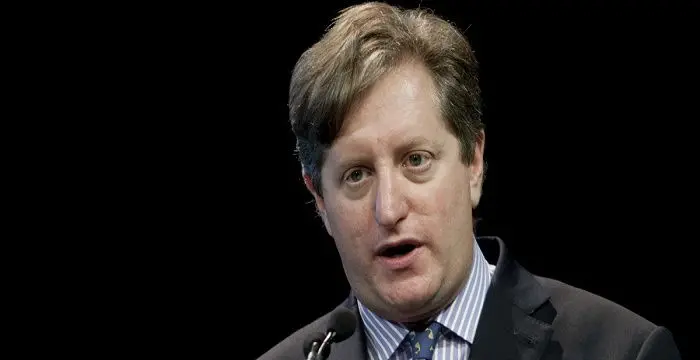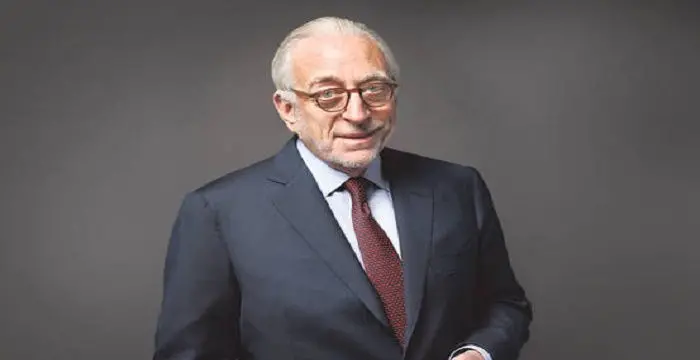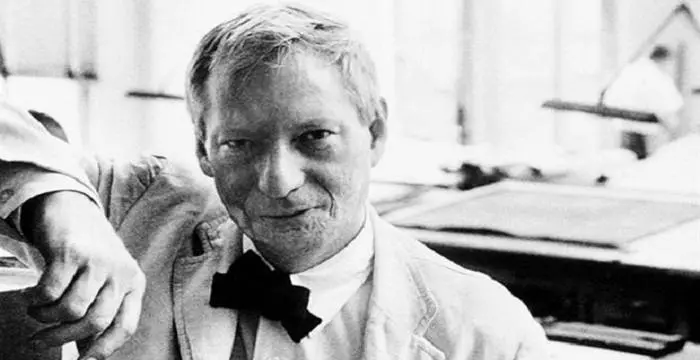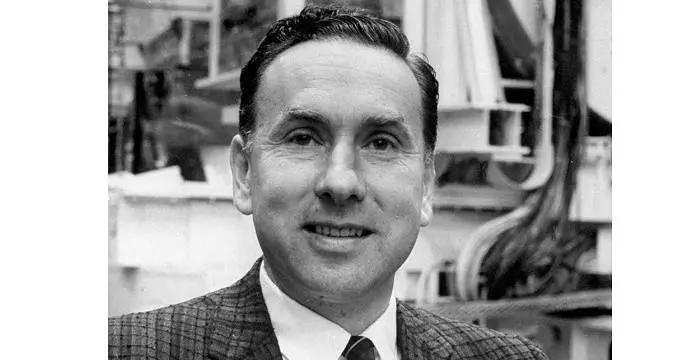
Robert Hofstadter - Physicists, Facts and Family
Robert Hofstadter's Personal Details
Robert Hofstadter was an American physicist famous for his research in protons and neutrons
| Information | Detail |
|---|---|
| Birthday | February 5, 1915 |
| Died on | November 17, 1990 |
| Nationality | American |
| Famous | Princeton University, University Of Pennsylvania, Scientists, Physicists, Astrophysicists |
| Spouses | Nancy Givan |
| Known as | Хофштадтер, Роберт |
| Childrens | Douglas Hofstadter, Laura Hofstadter, Molly Hofstadter |
| Universities |
|
| Notable Alumnis |
|
| Birth Place | New York City |
| Gender | Male |
| Father | Louis Hofstadter |
| Mother | Henrietta Koenigsberg |
| Sun Sign | Aquarius |
| Born in | New York City |
| Famous as | Physicist |
| Died at Age | 75 |
// Famous Princeton University
Wentworth Miller
Wentworth Miller is an American actor and screenwriter who achieved recognition for his role in the TV series ‘Prison Break’.
Pete Hegseth
Pete Hegseth is a FOX News Channel contributor from America. Check out this biography to know about his childhood, family life, achievements and fun facts about him.
Terence Tao
Terence Tao is an Australian- American mathematician who has contributed enormously to the field of mathematics. Check out this biography to know about his childhood, family life and achievements.
Robert Hofstadter's photo
Who is Robert Hofstadter?
Robert Hofstadter was an American physicist famous for his discoveries concerning the structure of nucleons. His in-depth investigation of electron scattering in atomic nuclei led to the determination of the size and shape of the proton and the neutron, and earned him a share of the 1961 Nobel Prize in Physics which he was jointly awarded with Rudolf Mössbauer. Born into a Jewish family in New York, he grew up to be a brilliant student who excelled in the sciences and mathematics. He graduated magna cum laude from the City College of New York and was awarded a Charles A. Coffin Foundation Fellowship to attend graduate school at Princeton University. Armed with a doctorate degree by the time he was 23, he served as a physicist at the National Bureau of Standards during World War II before embarking on an academic career. He worked for a while at the Princeton University where he carried out research on crystal conduction counters, on the Compton effect. After leaving Princeton, he moved to Stanford University where he focused his efforts on electron-scattering measurements. In the later stages of his career he grew interested in astrophysics and played a major role in the development of the Compton Gamma Ray Observatory.
// Famous Astrophysicists
Neil deGrasse Tyson
Neil deGrasse Tyson is an eminent astrophysicist and a popular science communicator. This biography of Neil deGrasse Tyson provides detailed information about his childhood, life, achievements, works & timeline.
J. Allen Hynek
Josef Allen Hynek was an American astronomer and ufologist. This biography of Josef Allen Hynek provides detailed information about his childhood, life, achievements, works & timeline.
Carl Sagan
Carl Sagan was an American astronomer, astrophysicist, cosmology expert and author. This biography profiles his childhood, family life, facts, career, achievements and timeline.
Childhood & Early Life
Robert Hofstadter was born on February 5, 1915, in New York to Polish immigrants, Louis Hofstadter, a salesman, and his wife, Henrietta Koenigsberg. His family was Jewish.
After attending elementary and high schools in New York City, he enrolled at the City College of New York, graduating with a B.S. degree magna cum laude in 1935. An excellent student, he became the recipient of the Kenyon Prize in Mathematics and Physics.
He was also awarded the Coffin Fellowship by the General Electric Company which enabled him to attend graduate school at Princeton University where he studied physics. He received both the M.A. and Ph.D. degrees in 1938 from that institution.
Upon completing his doctorate degree by the age of 23, he was awarded a Procter Fellowship at Princeton University for postdoctoral work in 1938-39. During this time he began the study of photoconductivity in willemite crystals which laid the foundation for his future works.
In 1939, he received the Harrison Fellowship at the University of Pennsylvania where he continued his postdoctoral work. There he met L. I. Schiff who became his friend for many years. It was at Pennsylvania that he helped to construct a large Van de Graaff machine for nuclear research.
Career
During the World War II he served as a physicist at the National Bureau of Standards. There he was pivotal in developing the proximity fuse, an anti-aircraft weapon used to detonate anti-aircraft and other artillery shells. He also worked at the Norden Laboratory Corporation during the war years.
He embarked on an academic career once the war ended. He joined the faculty of Princeton in 1946 where he primarily dealt with the study of infrared rays, photoconductivity, and crystal and scintillation counters. He filed a patent for thallium-activated sodium iodide gamma ray detector in 1948.
In 1950, he left Princeton to join the Stanford University as Associate Professor of Physics. There he initiated research on electron-scattering and continued working on scintillation counters and developed new detectors for neutrons and X-rays.
From 1953 onwards, he focused mainly on electron-scattering measurements. Working together with his students and colleagues, he studied the charge distribution in atomic nuclei and made the use of the linear electron accelerator to measure and explore the constituents of atomic nuclei.
In 1956, he published a paper ‘Electron Scattering and Nuclear Structure’ in ‘Reviews of Modern Physics’ journal in which he coined the term “Fermi”, symbol “fm” in honor of the Italian physicist Enrico Fermi, one of the founders of nuclear physics. The term is widely used by nuclear and particle physicists.
He was a Guggenheim Fellow in 1958-59, and spent one year at CERN in Geneva, Switzerland, on sabbatical leave. He retired from Stanford in 1985.
During the final years of his life, he developed a deep interest in astrophysics and was instrumental in the design and development of the EGRET gamma-ray telescope of the Compton Gamma Ray Observatory.
Major Works
Robert Hofstadter is best remembered for his research in electron scattering in atomic nuclei. He not only discovered that protons and neutrons—the fundamental constituents of the nuclei of atoms—have a definite size and form, but also determined that precise size of the proton and neutron. He also provided the first "reasonably consistent" picture of the structure of the atomic nucleus.
Awards & Achievements
Robert Hofstadter received a share of the Nobel Prize in Physics in 1961 "for his pioneering studies of electron scattering in atomic nuclei and for his thereby achieved discoveries concerning the structure of the nucleons."
He was honored with the National Medal of Science in 1986.
Personal Life & Legacy
Robert Hofstadter married Nancy Givan in 1942. The couple had three children. His son, Douglas, is a Pulitzer Prize winner.
He died of a heart attack on November 17, 1990, in Stanford, California, at the age of 75.
// Famous Scientists
Juliane Koepcke
Juliane Koepcke is a German-Peruvian biologist, who was the lone survivor among the 92 passengers and crew of the ill-fated LANSA Flight 508 that crashed in the Peruvian rainforest on 24 December 1971. Know more about her life in this biography.
Henry Cavendish
Henry Cavendish was a theoretical chemist and physicist, renowned for discovery of hydrogen and calculation of the mass of earth. To know more about his childhood, profile, timeline and career read on
Konstantin Tsiolkovsky
Konstantin Tsiolkovsky was a Russian rocket scientist and a pioneer of astronautics. This biography provides detailed information about his childhood, family, personal life, career, achievements, etc.
Robert Hofstadter's awards
| Year | Name | Award |
|---|---|---|
Other | ||
| 1987 | Dirac Medal for the Advancement of Theoretical Physics | |
| 1986 | National Medal of Science for Physical Science | |
| 0 | 1961 - Nobel Prize in Physics | |
| 0 | 1958 - Guggenheim Fellowship for Natural Sciences | |
| 0 | US & Canada | |
Robert Hofstadter biography timelines
- // 5th Feb 1915Robert Hofstadter was born on February 5, 1915, in New York to Polish immigrants, Louis Hofstadter, a salesman, and his wife, Henrietta Koenigsberg. His family was Jewish.
- // 1935After attending elementary and high schools in New York City, he enrolled at the City College of New York, graduating with a B.S. degree magna cum laude in 1935. An excellent student, he became the recipient of the Kenyon Prize in Mathematics and Physics.
- // 1938He was also awarded the Coffin Fellowship by the General Electric Company which enabled him to attend graduate school at Princeton University where he studied physics. He received both the M.A. and Ph.D. degrees in 1938 from that institution.
- // 1938Upon completing his doctorate degree by the age of 23, he was awarded a Procter Fellowship at Princeton University for postdoctoral work in 1938-39. During this time he began the study of photoconductivity in willemite crystals which laid the foundation for his future works.
- // 1939In 1939, he received the Harrison Fellowship at the University of Pennsylvania where he continued his postdoctoral work. There he met L. I. Schiff who became his friend for many years. It was at Pennsylvania that he helped to construct a large Van de Graaff machine for nuclear research.
- // 1942Robert Hofstadter married Nancy Givan in 1942. The couple had three children. His son, Douglas, is a Pulitzer Prize winner.
- // 1946 To 1948He embarked on an academic career once the war ended. He joined the faculty of Princeton in 1946 where he primarily dealt with the study of infrared rays, photoconductivity, and crystal and scintillation counters. He filed a patent for thallium-activated sodium iodide gamma ray detector in 1948.
- // 1950In 1950, he left Princeton to join the Stanford University as Associate Professor of Physics. There he initiated research on electron-scattering and continued working on scintillation counters and developed new detectors for neutrons and X-rays.
- // 1953From 1953 onwards, he focused mainly on electron-scattering measurements. Working together with his students and colleagues, he studied the charge distribution in atomic nuclei and made the use of the linear electron accelerator to measure and explore the constituents of atomic nuclei.
- // 1956In 1956, he published a paper ‘Electron Scattering and Nuclear Structure’ in ‘Reviews of Modern Physics’ journal in which he coined the term “Fermi”, symbol “fm” in honor of the Italian physicist Enrico Fermi, one of the founders of nuclear physics. The term is widely used by nuclear and particle physicists.
- // 1958 To 1985He was a Guggenheim Fellow in 1958-59, and spent one year at CERN in Geneva, Switzerland, on sabbatical leave. He retired from Stanford in 1985.
- // 1961Robert Hofstadter received a share of the Nobel Prize in Physics in 1961 "for his pioneering studies of electron scattering in atomic nuclei and for his thereby achieved discoveries concerning the structure of the nucleons."
- // 1986He was honored with the National Medal of Science in 1986.
- // 17th Nov 1990He died of a heart attack on November 17, 1990, in Stanford, California, at the age of 75.
// Famous University Of Pennsylvania
Sharon Stone
Sharon Stone is a Golden Globe Award winning American actress and former model. Read this biography to learn more about her childhood, profile, life and timeline.
Aaron Yoo
Aaron Yoo is a cinematographer and actor of Korean origin, who was born and raised in the United States of America. This biography of Aaron Yoo provides detailed information about his childhood, life, achievements, works & timeline.
Steve Eisman
Steve Eisman is an American businessman, money manager, and investor. Check out this biography to know about his childhood, family life, achievements and fun facts about him.
Nelson Peltz
Nelson Peltz is an ace American investor and a businessman. This biography provides detailed information about his childhood, family, personal life, career, etc.
Noam Chomsky
Chomsky is an American linguist, political theorist, and activist, often referred to as "the father of modern linguistics”. Check out this biography to know about his childhood, family life, achievements and other facts related to his life.
Louis Kahn
Louis Kahn was one of the most reputed architects of the 20th century. This biography provides detailed information about his childhood, life, works, career, achievements and timeline.
Robert Hofstadter's FAQ
What is Robert Hofstadter birthday?
Robert Hofstadter was born at 1915-02-05
When was Robert Hofstadter died?
Robert Hofstadter was died at 1990-11-17
Where was Robert Hofstadter died?
Robert Hofstadter was died in Stanford
Which age was Robert Hofstadter died?
Robert Hofstadter was died at age 75
Where is Robert Hofstadter's birth place?
Robert Hofstadter was born in New York City
What is Robert Hofstadter nationalities?
Robert Hofstadter's nationalities is American
Who is Robert Hofstadter spouses?
Robert Hofstadter's spouses is Nancy Givan
Who is Robert Hofstadter childrens?
Robert Hofstadter's childrens is Douglas Hofstadter, Laura Hofstadter, Molly Hofstadter
What was Robert Hofstadter universities?
Robert Hofstadter studied at Princeton University,University Of Pennsylvania, 1938 - Princeton University, 1935 - City College of New York, 1938 - Princeton University, 1939 - University of Pennsylvania
What was Robert Hofstadter notable alumnis?
Robert Hofstadter's notable alumnis is Princeton University, University Of Pennsylvania
Who is Robert Hofstadter's father?
Robert Hofstadter's father is Louis Hofstadter
Who is Robert Hofstadter's mother?
Robert Hofstadter's mother is Henrietta Koenigsberg
What is Robert Hofstadter's sun sign?
Robert Hofstadter is Aquarius
How famous is Robert Hofstadter?
Robert Hofstadter is famouse as Physicist

